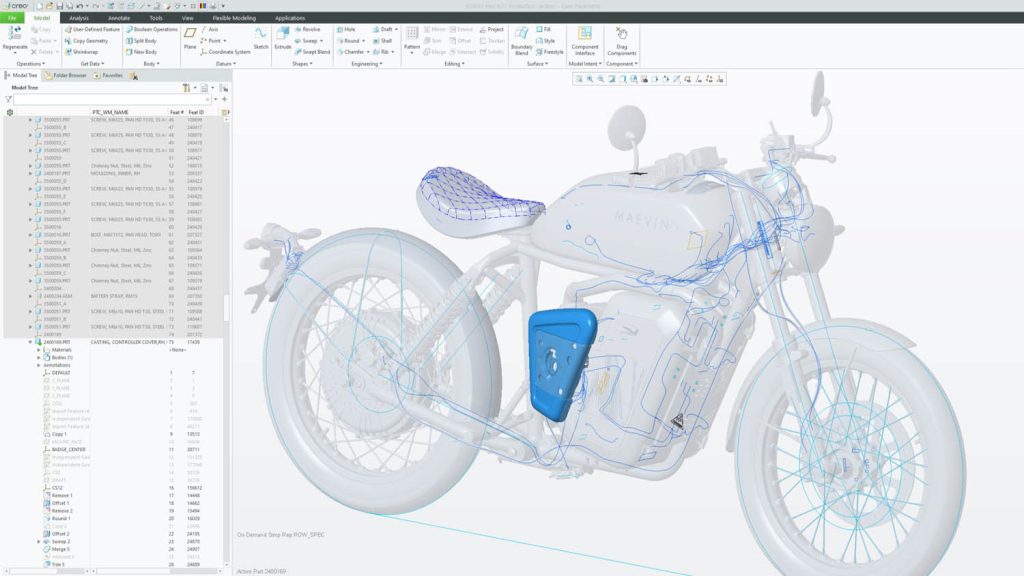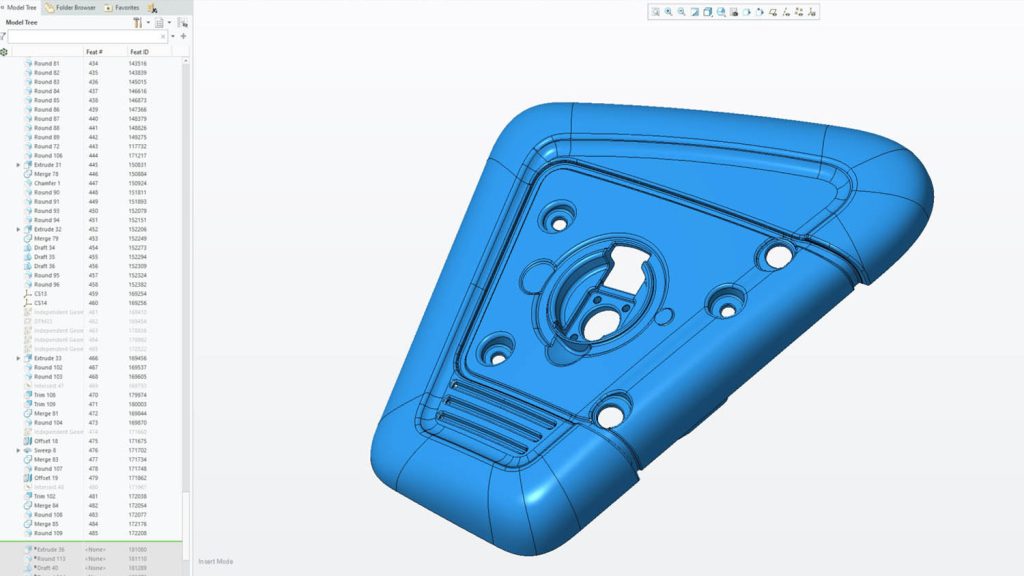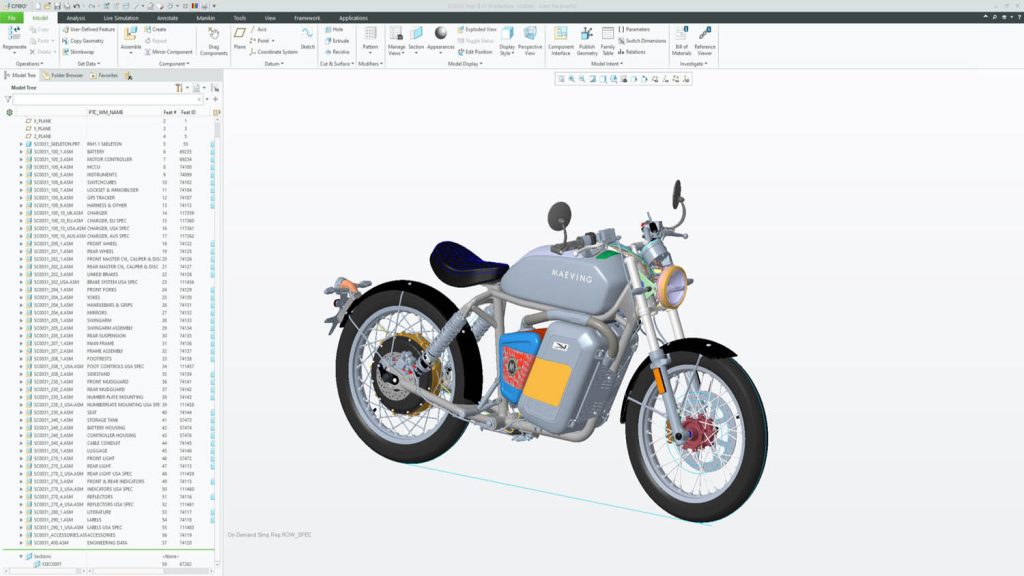Sometimes, tried-and-tested approaches are what it takes to get a start-up moving at speed. Stephen Holmes visits electric motorcycle company Maeving to see how a potent mixture of experienced hires and vintage looks are shaping the future of two-wheeled travel
Parked up on the street in a cool London neighbourhood, a chic motorcycle with a British racing green tank and all the angles of a 1960s cafe racer is drawing a crowd. This bike has all the star quality of those ridden by James Dean or Steve McQueen, with one important exception. It has no exhaust.
Running purely on electricity, Maeving’s RM1 is a bike that manages to scream ‘vintage cool’ while also providing a slick and sustainable way to get around town.
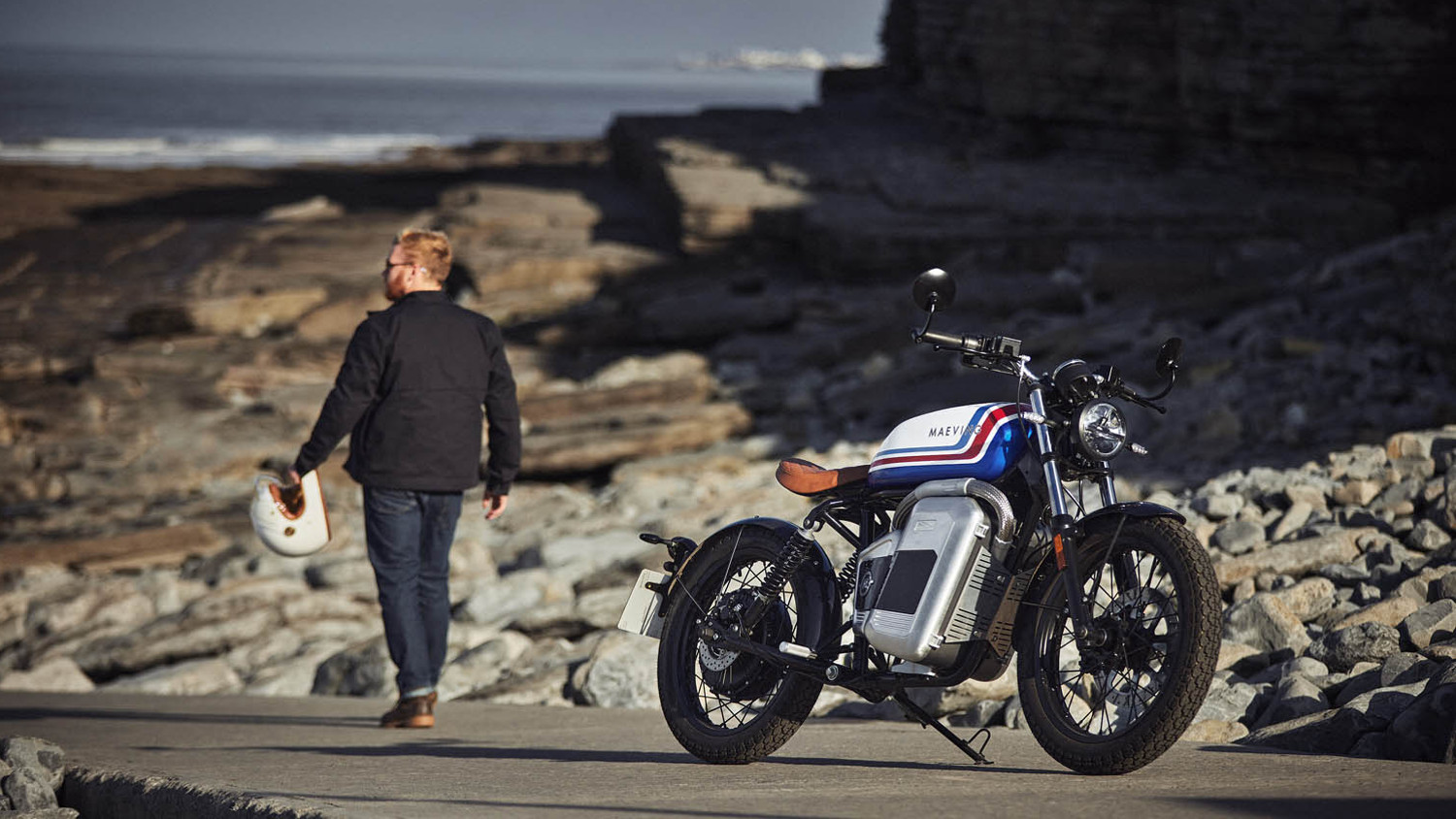
Hailing from Coventry, a UK hub for automotive engineering expertise, Maeving is a little over six years into its journey. The company’s co-founders Seb Inglis-Jones and Will Stirrup are on a mission to continue to build on the global reputation that the UK already enjoys for producing legendary motorcycles.
Yet the concept behind Maeving is not a purist’s love of motorcycling. The founders are strongly committed to making a positive environmental impact. On graduation from Durham University, Inglis-Jones and Stirrup had already laid a plan to regroup five years later and start a business that could deliver real change in terms of sustainability.
“Naturally, we turned to the electrification of transport as an area of interest,” Inglis-Jones explains. “And, in the process, we discovered that the highest rates of electric adoption were in China. We were just fascinated by this. Why? What’s this revolution, this paradigm shift that the West is unaware of? Through our research, we discovered that the answer in some ways was quite simple: It’s removable batteries in two-wheeled vehicles.”
The seed of an idea was planted: to develop a lightweight, two-wheel vehicle with a range of 40 to 50 miles and a removable battery that could be recharged at work or in a cafe, much like a smartphone. “That is such a simple idea. But it is genius, in some ways,” laughs Inglis-Jones, “because the number one barrier to electric adoption is charging infrastructure.” ‘
Range anxiety’, he explains, is not actually about the full range that a vehicle can cover on a single charge, but more about where you’re able to charge the battery.
Recent changes in mobile phone charging habits could be of real benefit to Maeving, he believes. As he points out, when the Nokia 3210 was released in 1999, it typically needed charging every seven days. “My iPhone gets through two-thirds of one day now, and the reason that I’m not shitting myself is that I have a charger at home and a charger at work.”
In other words, he continues, charging habits have changed, but “not the capacity of the device, which has decreased.”
Armed with its killer idea, Maeving still faced a considerable challenge in its early days. In 2017, the year it was founded, only around 300 electric vehicle (EV) bikes were sold in the UK. By contrast, 22 million were sold in China.
Today, China remains the sector powerhouse. However, a low price-ceiling in the Chinese market means that the quality of many electric bikes manufactured there is equally low.
By contrast, Maeving has positioned itself as an automotive brand that can offer all the benefits of removable batteries, along with design standards and engineering quality associated with British motorcycles and loved by global audiences.

Faith in foundations
Initially, Inglis-Jones and Stirrup worked with product design agency Bang Creations to develop initial sketches and quickly move into building a frame. This then became a moving, looks-like prototype built from 3D-printed and CNC-machined parts. This early MVP (minimum viable product) helped not only to impress potential investors, but also attract the engineering talent that Inglis-Jones and Stirrup knew they’d need to make the business a success.
“I think where a lot of start-ups fall foul is that they don’t understand or respect the engineering process,” says Inglis-Jones. “Our first hire was Triumph’s former head of product Graham Gilbert, one of the most experienced [motorcycle] product leads in the world.”
In fact, until very recently, the least experienced person on the Maeving team could still boast a 17-year track record in engineering and the most experienced engineer had been designing motorbikes for 47 years. “So straight away, our policy was to find the best talent and hire experienced engineers.”
Following the recruitment of Graham Gilbert, the Maeving team began visiting motorcycle dealers, to look in detail at what differentiates bikes and brands. Gilbert scrutinised 10 different models, recalls Inglis-Jones, analysing “every single component, how it was made, the manufacturing process, the materials – all sorts of things to get us thinking about how things would feel, how they would look, how the light would catch on them. I just can’t imagine working with a team that didn’t have that level of experience, because it’s been invaluable.”
In the design of its RM1 motorcycle, Maeving has stayed true to the design language of its concept bike, but the company’s thinking has moved on at speed. Much deliberation, for example, has been focused on tackling the battery⁄power⁄weight equation that has stumped other electric motorcycle makers.
With an electric car, the extra weight of batteries is compensated for through weight distribution and the increased torque of the electric motor, which provides grin-inducing rates of acceleration.
This can’t be replicated on the more limited platform of a motorbike, given the natural space constraints imposed by the bike and its rider, along with that rider’s strength and skill. “At the moment, if you wanted to make a bike that could go as far and as fast as a petrol bike, you would need to put 300kg to 400kg of batteries on it. It just wouldn’t work!” says Inglis-Jones.
Instead, he says, Maeving’s bikes are not designed to replace a car or a big motorbike, but instead to be ridden every day to work in urban and suburban areas. And this makes them applicable and accessible to a far wider customer base.
By limiting the power bracket to an 80-mile range, the design of the RM1 isn’t hampered by trying to be something that battery technology cannot yet support.
“At the same time, we have been trying to optimise for weight,” explains Inglis-Jones. “So, part of the reason for focusing on the 1930s, 1940s and 1960s in terms of inspiration is that these are super minimalist bikes. Specifically, they don’t have any extraneous plastic fairings on them. They’re stripped-down bikes.”
In this vein, the RM1 has a single-column frame, runs economical 19-inch wheels on super skinny tyres, and weighs in at a lithe 98kg without its two batteries.
Proprietary package
To achieve its optimised design, Maeving’s engineering team found that off-the-shelf parts wouldn’t cut it. “We wanted to make sure to have the perfect part to fit the package in the best possible way,” states Inglis-Jones, describing how 90% of the RM1’s components are proprietary and designed by Maeving engineers working with colleagues from its supplier base.
PTC Creo has played a substantial role in the development of the RM1, allowing the team to build parts in 3D CAD and for them to be quickly simulated with Creo’s built-in finite element analysis (FEA) tools.
“I’ve been using PTC products for nearly 24 years,” says Peter Taylor, lead project engineer at Maeving, who joined as employee number two and followed Graham Gilbert over from Triumph. “With Maeving being a start-up, and there being a need to get up and running and get things done as quickly as possible, there was an expediency to being able to use software solutions that the users were experienced with.”
Every single item on the bike needed to be modelled in Creo. Initially, the team built a skeleton model to mark all the hard points and fix them in place, gradually building up the RM1 from there, assigning space packages and placing the various components.
The design then moved into more detail, allowing the team to use various tools within Creo, such as Mechanisms, to ensure that housing openings had the requisite clearance envelopes to avoid clashes.
Using Creo Simulation, meanwhile, helped simplify the process, by keeping design and simulation in the same software package, says Taylor.
“The main thing is being able to put in accurate details from the materials, to be able to get a good estimate of weight distribution,” he explains. “When it comes to looking at materials and what loads parts have to withstand, we use Simulation to guide us on where to improve the spec of material or see if areas using a certain steel grade could maybe use aluminium.”
When dialling into critical structures, Maeving employs an external client to provide extra input, but it also makes use of Creo, enabling Taylor and team to export data as native files to that client.
As the key CAD software, Creo acts as a hub around which the RM1 is built. PLM data flows into PTC Windchill, with Maeving’s PTC reseller Concurrent Engineering offering support with the back-end data set up and being on hand to solve any issues across its PTC toolset.

Quality first
The RM1’s drop-in battery proved to be a key design challenge. This, after all, is key to the experience of fast-swapping the bike’s power source and allowing owners to remove and recharge one or both batteries quickly and cleanly.
Using the ergonomic, in-built handle, the battery slots into a compartment located where the engine would sit on a traditional bike, putting it at the heart of the RM1. When removed, it can be charged at any 13-amp wall plug via a charging dock.
The search to perfect the design led Maeving to Greenway, the world’s leading supplier of power packs to two-wheelers, which was persuaded to develop a completely custom battery and connector designed by the Maeving team.
“We’ve had a lot of pushbacks with them to get [the battery] denser and denser in order to play around with the packaging,” says Inglis-Jones. “So, we now have this ‘‘ bizarre situation where we have a supplier that would usually be doing deals to supply hundreds of thousands of units to the world’s biggest companies making small batches of very, very high-quality batteries for us.”
It was a similar story with the motor, continues Inglis- Jones. The reason that Maeving has been lucky enough to work with Bosch on a new generation of motor is because the technology giant was captivated by the design of Maeving’s bike and the company’s clear mission.
The brilliance of the design, combined with the recruitment of experienced figures with years of know-how and the right connections has helped work this magic.
That experience isn’t confined to engineering, either. Maeving’s procurement team has worked at a long list of UK motorcycle and automotive firms and its members have established in-roads with top-tier suppliers.
A willingness to fully test the bike and undertake a full homologation process for the final RM1 has also been a key factor in its success. “If you’re going to do that, you need to make sure that your supplier base is immaculate,” advises Inglis-Jones. “And Bosch – I mean, Bosch! – did a huge amount of due diligence on us before it was happy to work with us!”

Visual purpose
With its stripped-back aesthetic, cosmetic considerations as well as functional ones were vital when it came to parts, as most of these are on show on the RM1.
Most of the surface modelling has been done in the Interactive Surface Design Extension in Creo, enabling the team to achieve its desired shapes and contours.
“I think that’s certainly one of the things that got me into motorcycles and engineering design 20-odd years ago,” says Taylor. “It’s the fact that you’ve got something that wants to look good. There are so many components to a motorcycle, and everything is on show, but it must be aesthetically pleasing. Having Surface Design makes it so much easier. It’s a much more flexible and powerful tool to be able to use.”
For some of the styling work around key visual elements like the tank and seat, clay modelling is still used. A modeller will sculpt the clay surface physically on top of a nylon SLS 3D-printed space envelope, before the design is 3D scanned and data taken back into Creo.
The sculpted ‘bobber’ seat of the RM1 has garnered a lot of love from bike critics, riders and from Inglis-Jones himself. “It’s easily my favourite part of the bike, bizarrely,” he says. Partly, he adds, this is down to the romance of the clay modelling process. “Sitting with an artist clay modeller and talking through it, saying ‘I actually want a little bit more angle on the back.’ I think we’ve created the best-looking single bobber seat in the world, humbly!”
In his opinion, there’s no substitute for physical form and for making assessments based on a changing physical form. “You can look at a million 2D and 3D CAD images, but you just don’t get a sense for the presence of a component as it sits in 3D. Whether it’s foam or clay, we certainly wouldn’t click the green button on anything until we’ve seen it in 3D, physical form.”
The team uses 3D-printed prototypes to ensure fit, using SLS and HP MJF nylon parts for various mouldings. To get accurate prototypes that help reflect the appearance and purpose of the components, DLP 3D printing was used to replicate rubber parts.
Working with Paragon Rapid Technologies, the Maeving team was able to replicate durable ASA parts quickly using Carbon’s RPU 130, a tough, heat-resistant material.

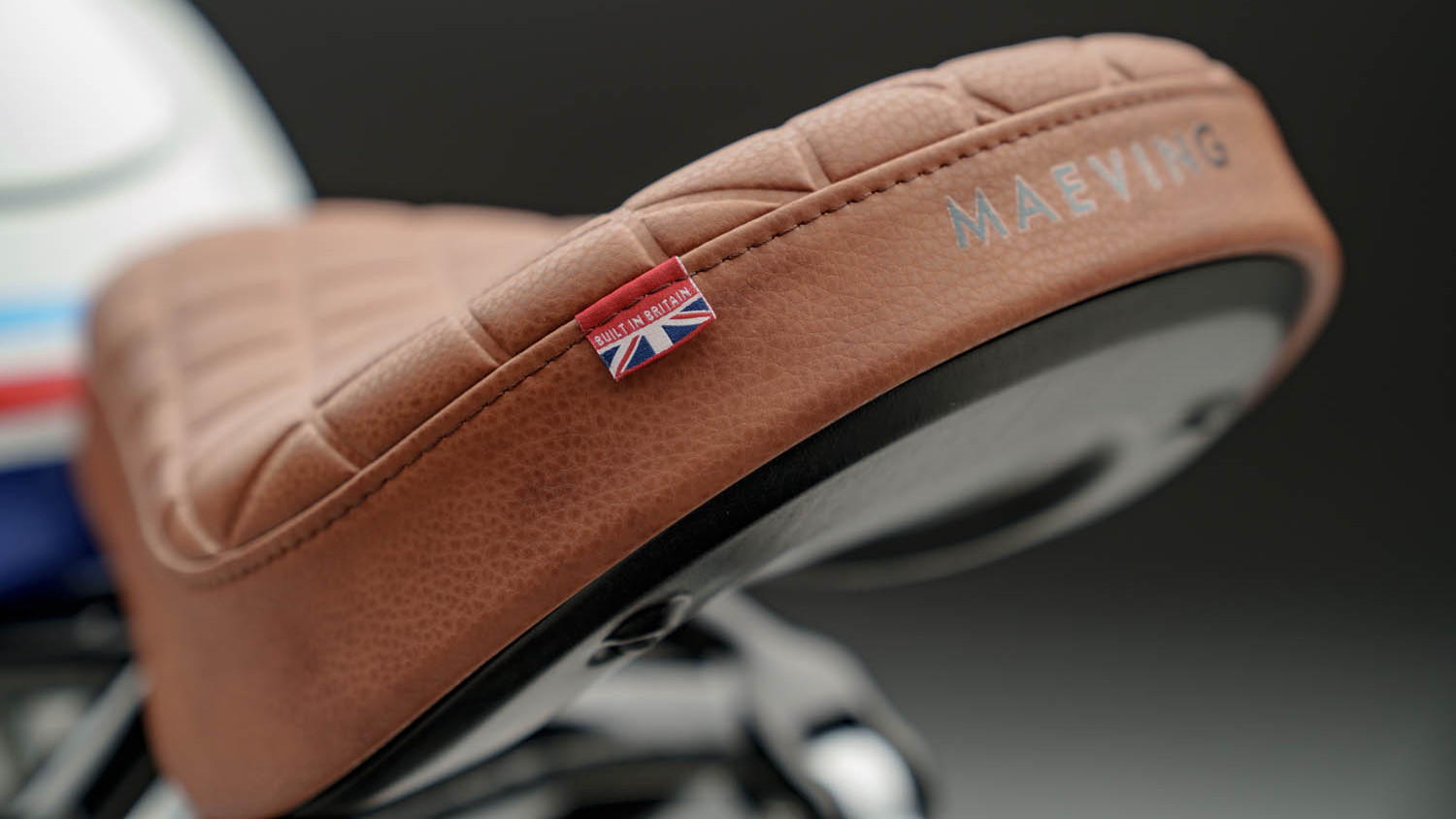
Building out
With a continued focus on creating the ideal vehicles for urban transport, the Maeving design team is already working on exciting new models and innovations. Having already launched a 65mph version, the RM1S, the longterm goal is to drive home the notion that the future of sustainable transport is two wheels, not four.
Having moved from an 11,000 square foot factory to a unit boasting 50,000 square feet at the end of 2023, Maeving now has capacity to produce 7,500 units per year, and expansion into markets like North America and Southern Europe is well underway.
If its plans succeed, city streets around the world could be navigated by lightweight bikes bearing the Maeving badge, adding cool sustainability to the everyday commute.
This article first appeared in DEVELOP3D Magazine
DEVELOP3D is a publication dedicated to product design + development, from concept to manufacture and the technologies behind it all.
To receive the physical publication or digital issue free, as well as exclusive news and offers, subscribe to DEVELOP3D Magazine here


